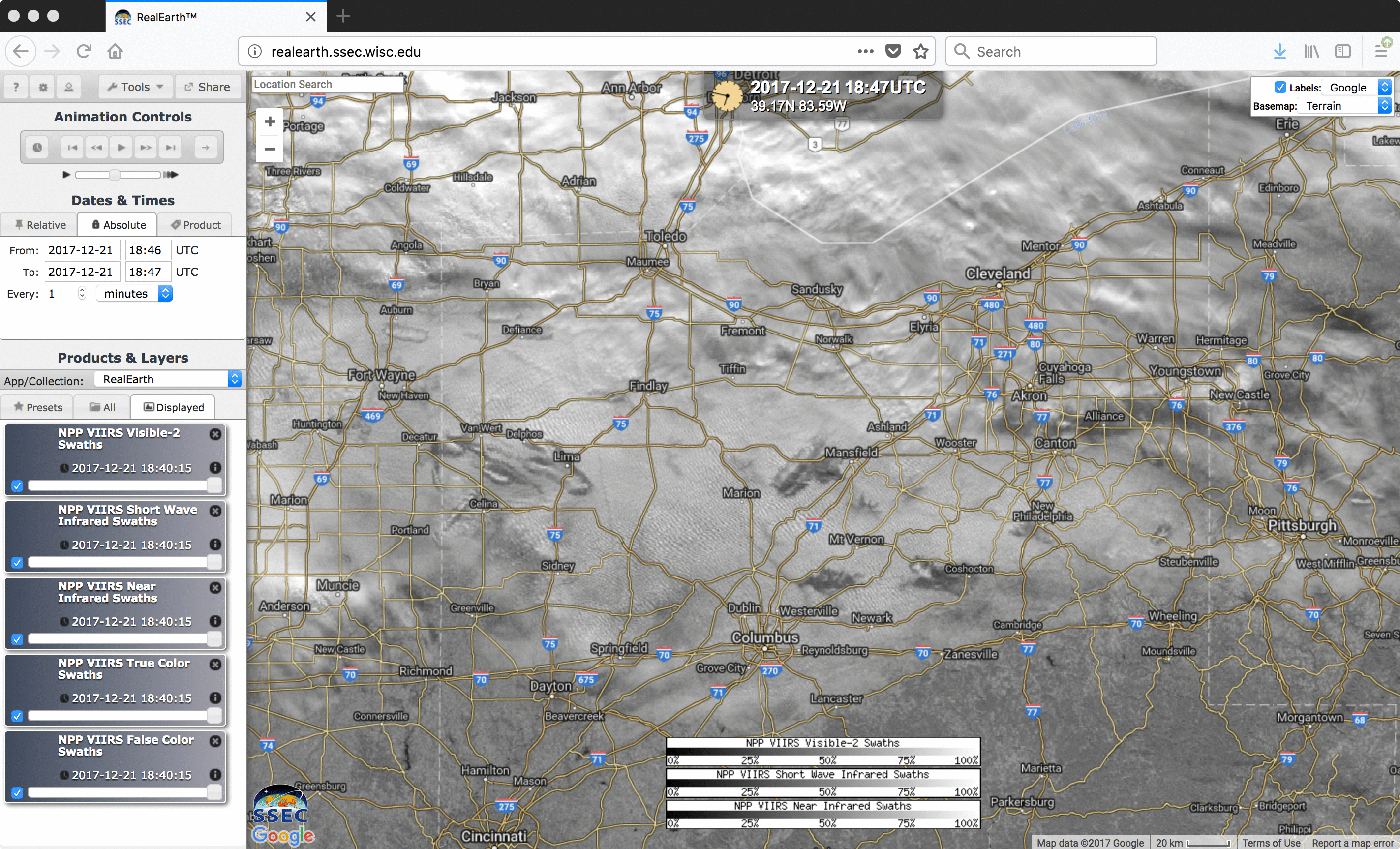Aircraft hole punch and cloud dissipation features over Illinois, Indiana and Ohio
A toggle between 250-meter resolution Terra MODIS True-color and False-color Red-Green-Blue (RGB) images from the MODIS Today site (above) revealed numerous aircraft “hole punch” and dissipation trail or “distrail” features over Illinois, Indiana and Ohio on 21 December 2017. These cloud features were caused by aircraft that were either ascending or descending through a layer of cloud composed of supercooled water droplets — cooling from wake turbulence (reference) and/or particles from the jet engine exhaust acting as ice condensation nuclei causes the small supercooled water droplets to turn into larger ice crystals (many of which then fall from the cloud layer, creating “fall streak holes“). The ice crystal clouds appear as darker shades of cyan on the false-color image.GOES-16 “Red” Visible (0.64 µm) and Near-Infrared “Snow/Ice” (1.61 µm) images over Illinois/Indiana [click to play MP4 animation]
GOES-16 “Red” Visible (0.64 µm) and Near-Infrared “Snow/Ice” (1.61 µm) images over Indiana/Ohio [click to play MP4 animation]


![Terra MODIS true-color and false-color RGB images [click to enlarge]](https://cimss.ssec.wisc.edu/satellite-blog/wp-content/uploads/sites/5/2017/12/171221_terra_modis_truecolor_falsecolor_IL_IN_hole_punch_clouds_anim.gif)
